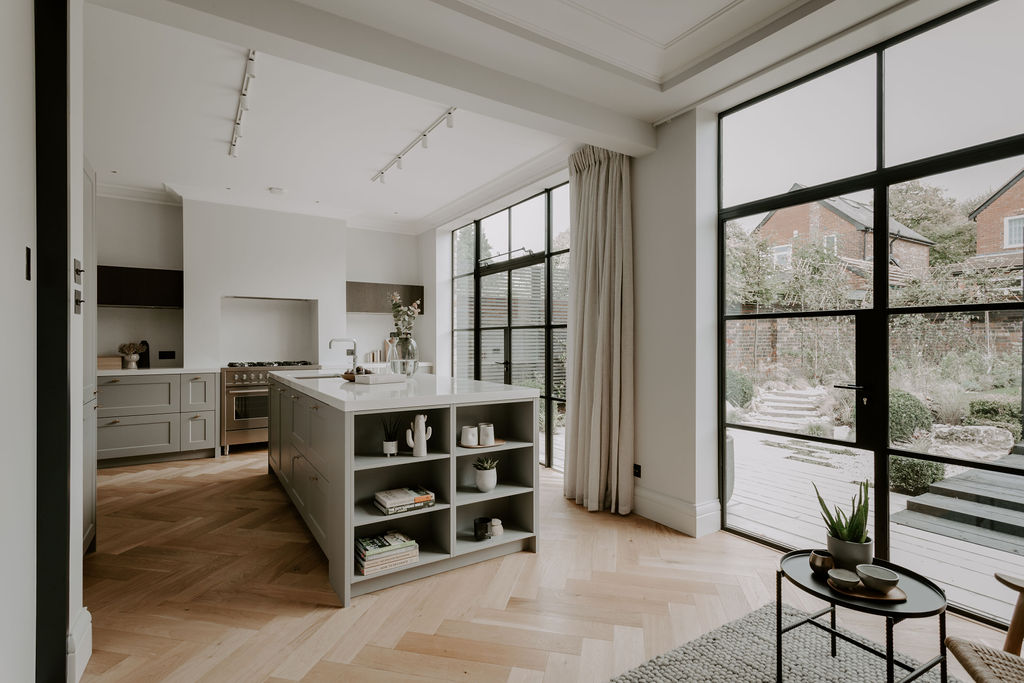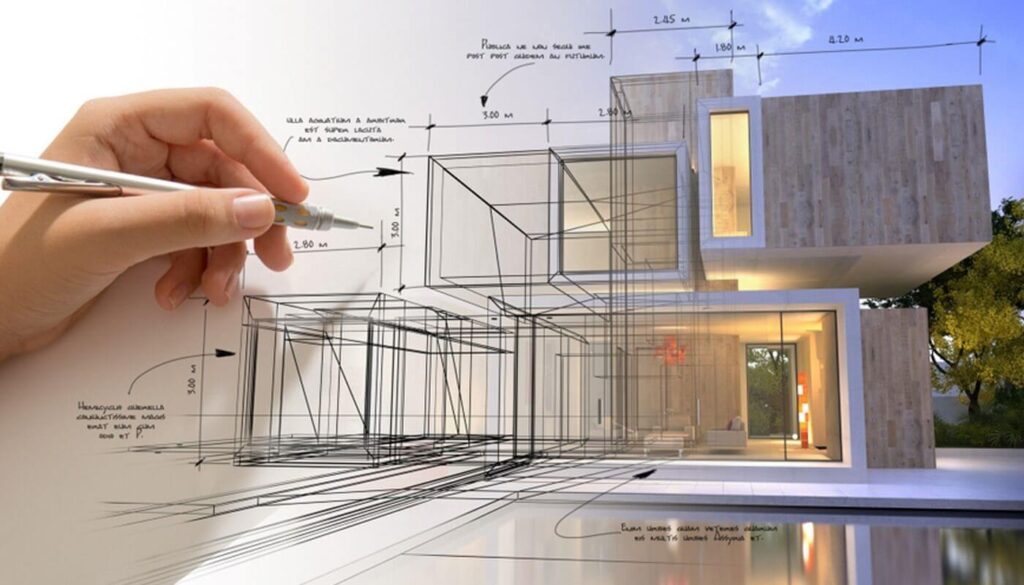Discover the Best Interior Design Near Me for Your Dream Home
Discover the Best Interior Design Near Me for Your Dream Home
Blog Article
Taking Full Advantage Of Aesthetic Charm: The Synergy Between Interior Design and Home Designer Methods
Understanding the subtle interplay between interior design and home architecture can dramatically raise the aesthetic charm of a living area. This marital relationship of style disciplines involves a thoughtful combination of architectural elements with interior formats, and a proficient application of principles such as rhythm, balance, and contrast. As we explore this synergy, we will certainly discover means to produce visually striking and functional settings that not just reflect personal design, but also adjust to the vibrant requirements of modern living.
Understanding the Essentials: Specifying Interior Design and Home Architecture
Interior decoration and home architecture, commonly linked, stand for the aesthetic and structural elements of our living areas. Interior Design is a complex self-control that involves producing useful, risk-free, and aesthetically pleasing rooms inside a building. It includes elements such as furnishings arrangement, shade sychronisation, and accessory option. On the other hand, home style mostly concentrates on the strong structure of a structure. It involves creating a practical and aesthetically pleasing structure that stands the test of time. It incorporates elements such as area planning, sustainability, and building and construction. Both fields call for a deep understanding of human behavior, culture, and psychology. Each plays an important duty fit our living environments, adding to our total comfort, efficiency, and wellbeing.
The Synergy Discussed: Exactly How Interior Decoration and Home Architecture Intersect
Comprehending the harmony in between interior decoration and home design can open a globe of creativity and functionality. The influence of design on interiors is a vital facet to think about when discussing this junction - Luxury home architect. This discussion will certainly concentrate on the unifying layout concepts that blend these two fields into a harmonious whole
Unifying Design Concepts
While it may appear that indoor style and home design are two distinct techniques, they are actually deeply interconnected, creating a harmony that is necessary for developing harmonious space. Unifying layout concepts are the columns that facilitate this symbiosis. The concepts consist of balance, rhythm, emphasis, contrast, and consistency. These components coalesce to provide a natural visual allure. Equilibrium produces a sense of security, rhythm supplies a sense of motion, harmony guarantees unity, comparison stimulates interest, and focus attracts attention to crucial elements. The strategic application of these concepts allows a seamless mix of looks and function, enhancing the overall experience of the room. In essence, these concepts function as the bridge, joining interior decoration and building techniques.
Architectural Impact on Interiors
The intertwining of indoor layout and design becomes even extra apparent when one thinks about the building influence on interiors. Building elements are intrinsic to an area's capability and visual appeals, shaping the style from the start. Columns, staircases, beam of lights or arcs, as an example, serve both attractive and structural functions. They can split areas, develop focal factors or imbue a room with a particular vibe. Consideration of percentage, appearance, and light additionally originate from building influences. Inevitably, style mold and mildews the canvas whereupon indoor designers work. Their synergy is therefore undeniable: architecture establishes the framework, which indoor style improves with design, texture, and shade. This symbiotic connection makes sure a harmonious equilibrium in between function and charm, enhancing the visual appeal of any room.
Key Concepts in Harmonizing Interior Design and Home Architecture
Striking a balance in between functionality and visual appeal is a basic aspect of balancing interior decoration and home design. An equally crucial concept is the integration of sustainable layout to produce energy-efficient and environment-friendly homes. Lastly, understanding and checking out different building designs can likewise play an essential role in achieving a harmonious layout.

Balancing Functionality and Aesthetics
Stabilizing performance and aesthetics in interior design and home style arises as one of the vital principles to think about. This delicate stability needs a meticulous mix of practicality and charm, aiming to create rooms that are not only aesthetically pleasing but likewise serve their intended objective effectively. Aesthetics uplifts the state of mind and affects the assumption of room, whereas capability guarantees usability and convenience. Trick to this equilibrium is a thoughtful selection of elements such as illumination, shade, and texture, which must complement each other while offering their private roles. Just as important is the effective setup of the space, with a well-planned design adding dramatically to the harmony between performance and appearances. This harmonious blend ultimately improves the lifestyle for the residents.
Lasting Style Combination
In preserving the stability between performance and aesthetic appeals, one should additionally think about the integration of lasting layout concepts. This approach not only improves the aesthetic allure of a space however likewise guarantees its long life and decreased environmental effect. An unified blend of indoor layout and home architecture, directed by sustainability, can produce rooms that are beautiful, practical, and ecologically friendly.
Discovering Building Styles
While there are a myriad of building styles to discover, it is more info important to understand that every one carries its unique principles that can dramatically affect the harmonization of interior style and home style. These designs, ranging from the elaborate Baroque to the minimalist Modernist, bring distinctive philosophies and aesthetics that, when correctly comprehended and used, can develop homes that are not only aesthetically sensational but also harmoniously integrated in terms of style and architecture. Selecting a building design is not simply regarding personal visual choice; it has to do with selecting a design language that talks to the home owner's way of life, approach, and ambitions, producing a home that is a true reflection of its homeowners.
Instance Researches: Extraordinary Examples of Layout and Design Synergy
Digging into some extraordinary study supplies a profound understanding of just how design and design can harmoniously get more info combine to create here engaging and practical spaces. The famous Fallingwater house, made by Frank Lloyd Wright, exceptionally demonstrates this synergy. Wright's layout masterfully integrates your house with its surrounding landscape, while the indoor mirrors the exterior's organic kinds. One more example is the minimalistic Tadao Ando's Church of Light in Japan. The designer achieved a best balance in between simpleness and drama, making use of raw concrete and light. Inside, the raw, very little style produces a feeling of serenity and spiritual reflection. These instances illustrate the value of harmony between indoor style and architecture in accomplishing practical and visual success.
Practical Tips: Enhancing Your Home's Aesthetic Charm
Attracting inspiration from the study of architectural and style harmony, home owners as well can apply some practical techniques to boost their home's aesthetic appeal. A harmonious blend of shades, textures, and illumination can improve an area, producing a cozy and inviting atmosphere. Choosing furniture that complements the architectural components of your house can promote a feeling of unity. Wall surface art and design pieces can add character, mirroring individual design and taste. Integrating greenery, either through interior plants or sights to the outdoors, can bring an aspect of nature, delivering a soothing impact. Smart use of mirrors can open up an area, providing an illusion of a larger location. Eventually, the aesthetic appeal depends on stabilizing performance with design, developing a home that is both beautiful and comfortable.

Future Trends: How Modern Techniques Are Changing Interior Design and Architecture
As the world progresses, so do the fads in indoor design and style. Modern techniques are increasingly concentrating on sustainability, including energy-efficient layouts and green materials. These patterns mirror a change towards designs that are not just visually pleasing, however likewise eco mindful, technically progressed, and versatile to altering way of livings.
Final thought
In conclusion, the integration of interior style and home style techniques is a dynamic method to boosting visual appeal. By leveraging essential principles like comparison, equilibrium, and rhythm, and incorporating elements of contemporary living, developers can develop functional, aesthetically pleasing settings. Via recognizing this harmony, house owners can make enlightened choices that not only elevate their space however also add to their overall wellness.
Comprehending the subtle interplay between indoor layout and home style can dramatically boost the visual charm of a living area.Interior design and home style, usually linked, represent the architectural and visual aspects of our living spaces.While it might seem that indoor layout and home style are two distinct techniques, they are in fact deeply interconnected, creating a synergy that is vital for creating unified living rooms.The intertwining of interior layout and style comes to be also more obvious when one considers the architectural impact on interiors. An unified blend of interior layout and home design, guided by sustainability, can develop areas that are stunning, functional, and eco friendly.
Report this page